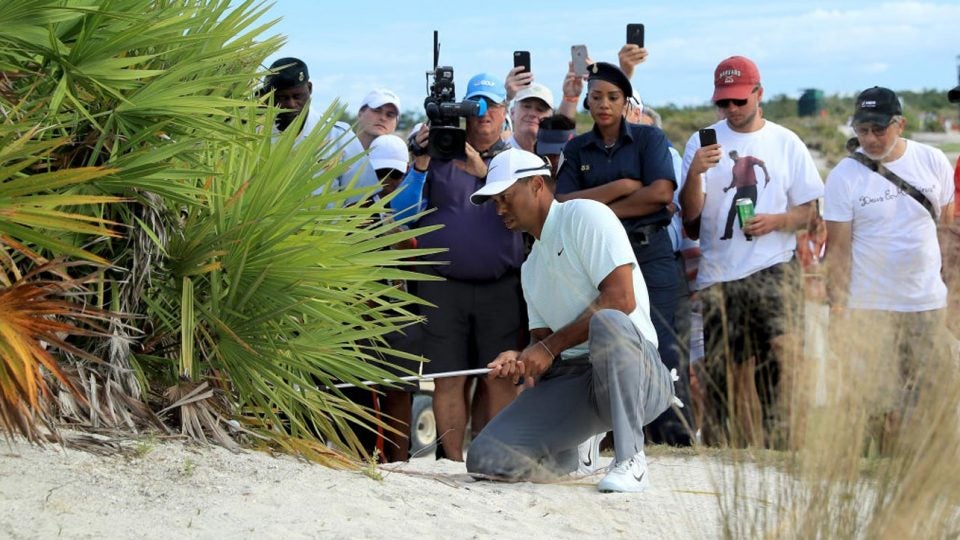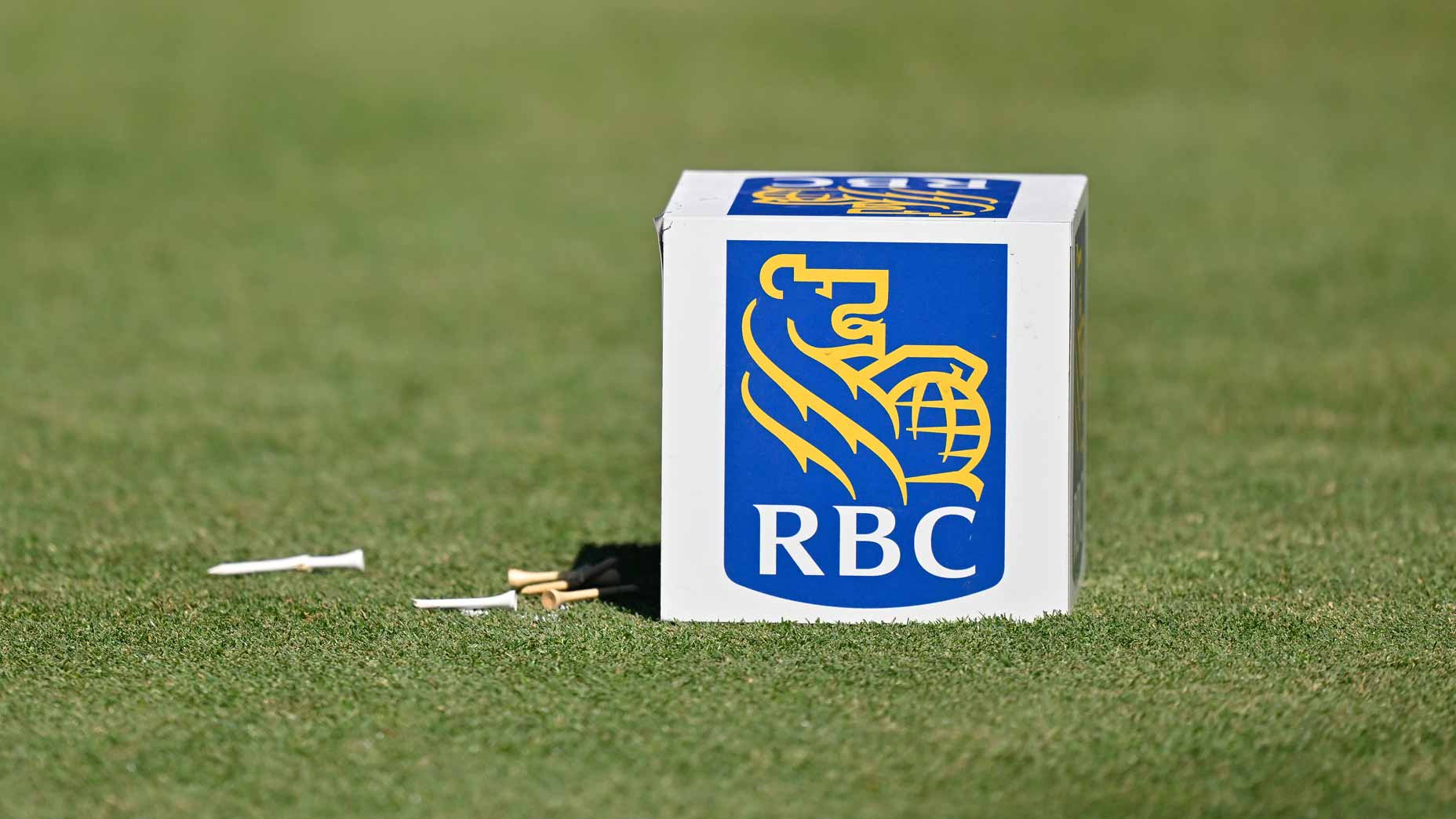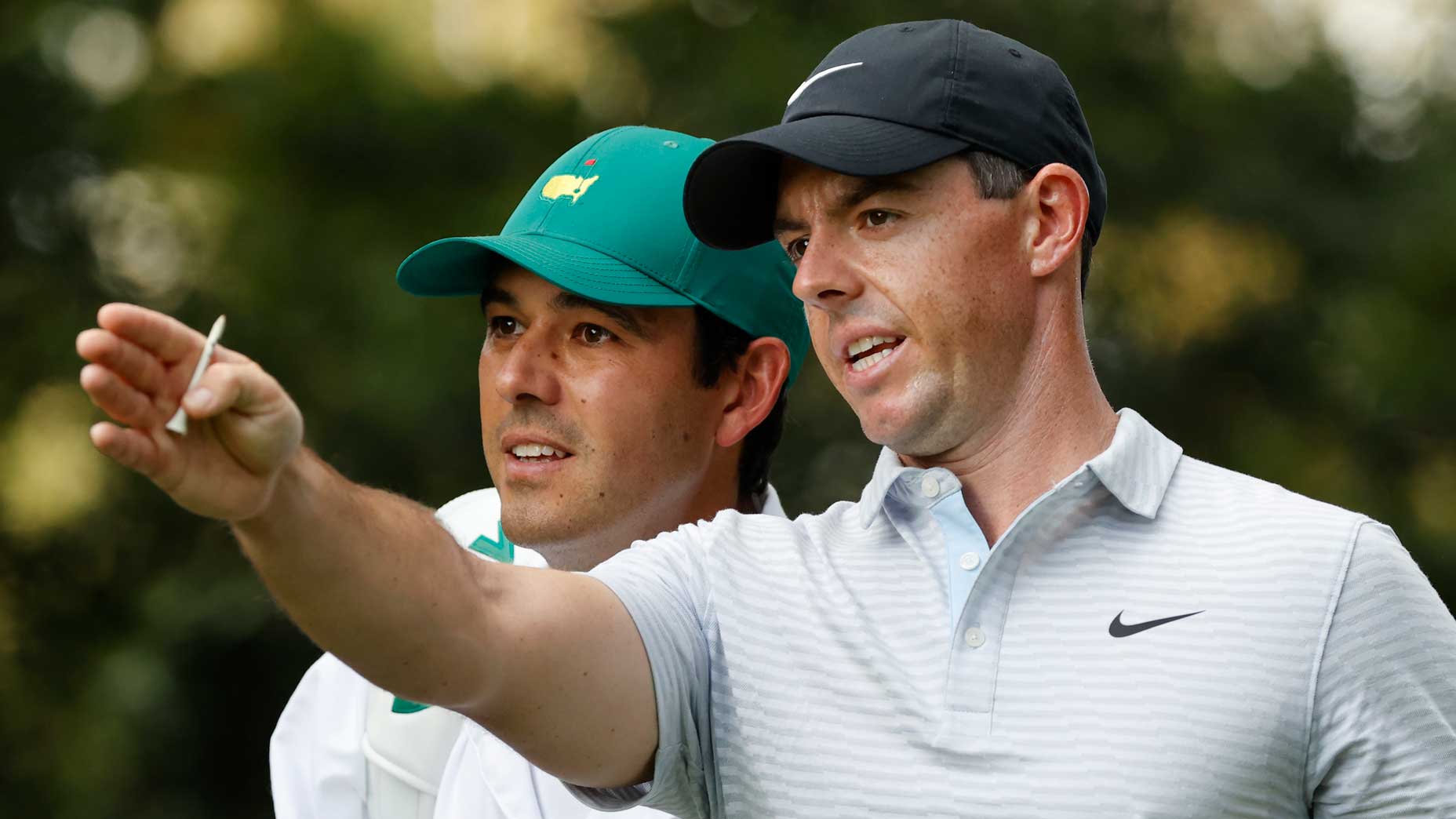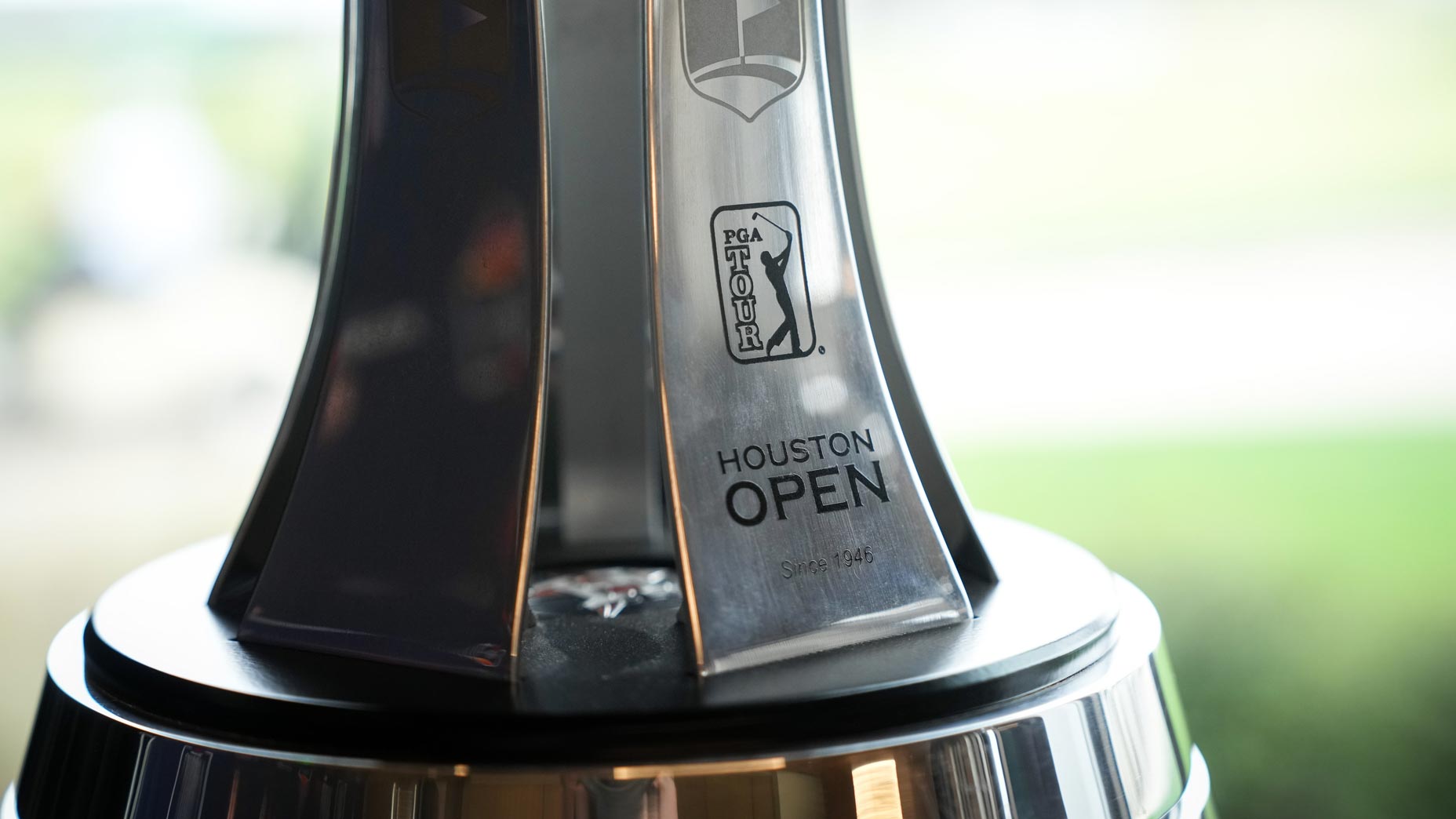The rules of golf are complicated but the logic behind them is not. The everyday strict adherence to the rules of golf, and to the spirit in which they were written, is what separates golf from virtually every sport. Which brings us to Tiger Woods’s play, in his own tournament, on the 18th hole on Friday.
Woods said he did not know he had hit his ball more than once as he played from under a bush. Let’s start there. The player is assumed to be credible. Without evidence that contradicts a player, the player’s word is his bond.
Woods acknowledges that slow-motion, high-definition replay of the shot shows that he did hit it twice. That makes this situation different from the one in Chicago in 2013, when he refused to acknowledge that he caused his ball to move when attempting to remove small bit of a branch leaning against it. Many people did not find Woods credible that day, including the rules officials. It was clear on the videotape that his ball had moved.
A sensible 2017 rules change, to reduce it to everyday language, states that if you need slo-mo, hi-def replays to know what actually happened, you’re in the clear. So Woods in the Bahamas is in the clear.
All that leaves is spirit. And spirit is impossible to define.
But spirit is at the heart of the game and something that’s under great stress right now.
Lexi Thompson at the ANA Inspiration in 2017 could have said, “That was a bad marking and I understand why I’m getting the penalty.” She didn’t.
Dustin Johnson at the 2016 U.S. Open could have said, “That ball moved and I can’t say I definitely did not cause it to move, so I’ll take the shot.” He didn’t.
Woods at the 2013 Masters could have said, “I started the problem here by taking an incorrect drop and I’ll fix the problem by dropping out of the tournament.” He didn’t.
Any of those actions would have improved the game. Any of those statements would have been a way for a player to say, “The game is bigger than I.” Any of those statements would been an opportunity for the player to take control of the situation in the most honorable way. That’s golf.
Just for a taste of what that’s all about, here’s Henry Longhurst’s account of how Arnold Palmer handled a rules situation in the second round of the 1961 British Open:
“Palmer birdied four of the first six holes and finished with an excellent 73. Morally speaking, it was a 72. On the 16th hole—a 510-yard par 5, which harassed him throughout the championship—he hit a very long drive. But his 5-iron approach failed to hold the green, bouncing into a small sand trap. ‘It was nothing serious,’ said Palmer later. ‘An easy shot.’ But three-quarters of the way through his downswing, the wind blew the ball backward. He hit squarely on it, blasting it over the green. Following the wonderful ethic of golf, Palmer immediately reported to an official that his ball had moved. He was told there would likely be no penalty because he had done nothing to cause the ball to move. However, the rule is quite clear on this point, and Palmer later had to add a stroke for his misfortune, ending up with a 7 instead of a 6.”
You might be tempted to say that everything has changed since then. Actually, nothing has changed. The game then is the game now. Or should be. It is unlikely that anybody other than Palmer knew that ball moved. But Palmer, of course, was not trying to get away with anything and didn’t want to get away with anything.
And Woods, on Friday, wasn’t, either. The only difference is that the rules, with some of the recent changes, are making the player less responsible for what he or she does. And that diminishes the game.
The most common double-hit is coming out of a grassy greenside lie using a long swing with an open-faced wedge. You know it when it happens. The feeling almost makes you sick. But this wasn’t that.
The shot in question on Friday was from a sandy lie with the ball under a bush, amid its fronds, the player swinging from his knees. Trying to hit a little low-liner, Woods turned the club over hard at impact on his constricted swing. Even after watching the video closely and repeatedly, it’s not really clear whether he hit it twice or pushed it.
Following the examples cited above, your instinct might be to say that Woods should have said on Friday: “I didn’t know what I had done at the time, but now that I see it I’m going to take the shot, despite the rules change from last year that covers this situation.” You might say that is the true spirit of the rules. By the way, a player can do that. A player can always call a violation on himself.
But a more considered opinion is this: Woods did the right thing, for himself and for the game. In all serious tournament golf, and Tiger’s 18-player Hero World silly-season event is of course serious tournament golf, the rules must be applied in the exact same way to every player. Otherwise, you cannot trust the results.
Every time there is a complicated ruling, precedent is being set. Had Woods added a shot to his score because of what he had learned about his play on 18 from hi-def replay, he would have put a burden on the next player in that situation to do the same. And that would not be fair or right.
But consider this, too. Arnold, in that bunker, did the fair and right thing and it meant one shot more on his card. Tiger did the fair and right thing and it cost him nothing. That’s where things are going. If you can assign responsibility elsewhere, that’s better. The way things are going, Arnold wouldn’t get that shot anymore. He could just blame the sudden gust of wind.
Michael Bamberger may be reached at michael_bamberger@golf.com.








